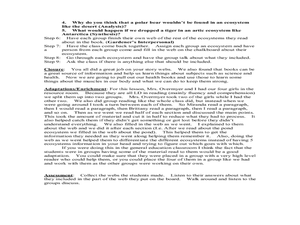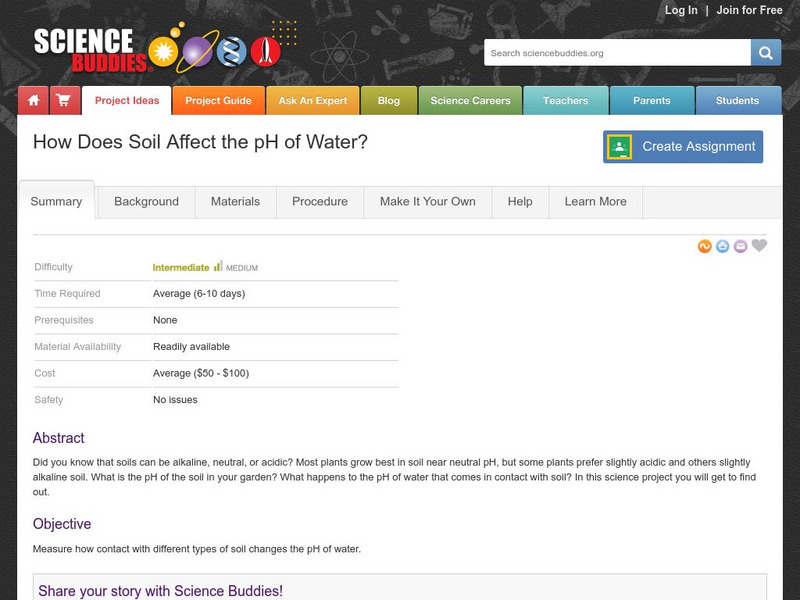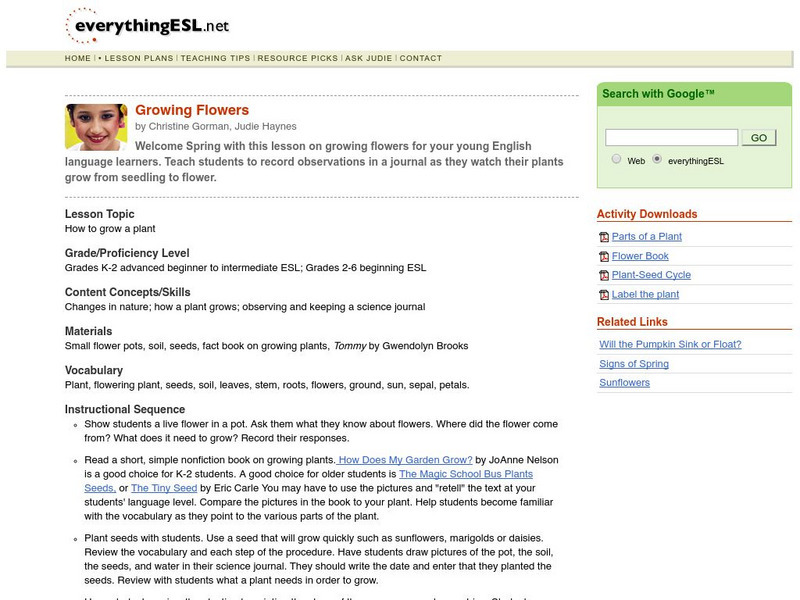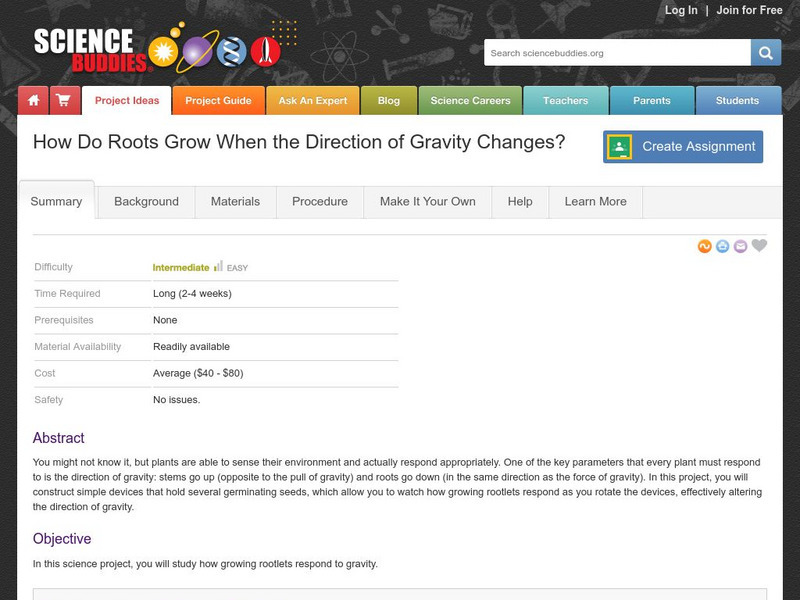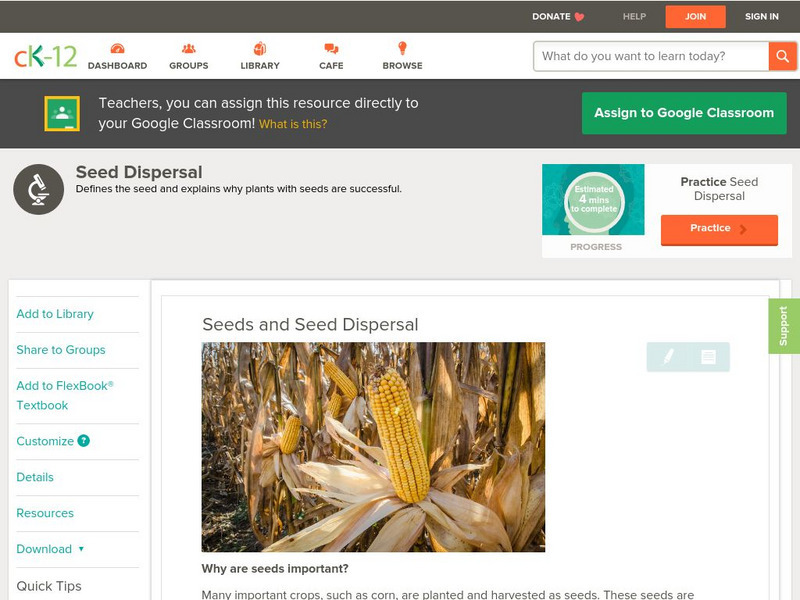Curated OER
Animal Masks
Learners design and make animal masks. In this research and application lesson, students use a computer to research what a panther eats, select an animal mask they want to make and then use the materials provided to create their...
Curated OER
Graphic Organizers Aid Comprehension
Students create story webs to aid comprehension of ecosystems. For this reading strategies lesson, students discover the importance of organizing information while reading a nonfiction text. Students produce story webs to communicate...
Curated OER
Problem-Solving Decision: Too Much or Too Little Information: Practice
In this too much or too little information worksheet, students determine if they have too much or too little information to solve the word problem. Students solve four problems.
Curated OER
"Julie of the Wolves"
Fifth graders research life in Alaska and compare life there to their lives in this instructional activity. They read "Julie of the Wolves." They research through the novel and other reference books facts about the Alaskan climate and...
Curated OER
Autumn Learning Fun
Students discuss autumn. In this language arts lesson, students discuss words that are associated with the season of autumn. Students read books about autumn.
Curated OER
Geography Made Fun with Technology
Young scholars incorporate knowledge box into their classroom activities. In this technology integration lesson, students fill out a graphic organizer using Glossopedia to analyze a new subject.
Curated OER
Geography: Snow Cover on the Continents
Young scholars create maps of snow cover for each continent by conducting Internet research. After estimating the percentage of continental snow cover, they present their findings in letters, brochures or Powerpoint presentations.
E-learning for Kids
E Learning for Kids: Science: Vikings: How Do Plants Grow?
Olaf the viking is learning about the life cycle of plants. Help him tend to his garden as he learns.
Science Buddies
Science Buddies: Home Sweet Biome: How Do Plants Grow in Different Environments?
In this science fair project you will learn about biomes and how different climatic conditions affect plant growth. This can explain why some plants and animals are similar in different areas of the country, and in other parts they are not.
Primary Resources
Science and Plants for Schools: Living Processes
Great site to help teachers enhance learning about plants and how they grow. There are many downloads including lesson plans, experiments, and activities.
Science Buddies
Science Buddies: How Does Soil Affect the P H of Water?
Did you know that soils can be alkaline, neutral, or acidic? Most plants grow best in soil near neutral pH, but some plants prefer slightly acidic and others slightly alkaline soil. What is the pH of the soil in your garden? What happens...
Science Buddies
Science Buddies: Shoots: How Do Mint Plants Branch to Form New Stems?
Do you like to climb trees? The branches of trees are what make them so fun to climb. Each branch starts out as a tiny shoot that grows out from a stem. How is the growth of shoots along a stem regulated?
Everything ESL
Everything Esl: Growing Flowers
A lesson for young ELL students on how to grow flowers. Teachers will meet the ESL TESOL standards. Lots of resources included in this activity.
Alabama Learning Exchange
Alex: Seeds: How They Grow
The students will be collecting, germinating and planting seeds to show the process of plant growth. The students will be recording the information in their science journal. In addition, the students will be observing the water cycle as...
PBS
Pbs Learning Media: Biome in a Baggie
This ZOOMSci video segment shows how to create self-contained environments and explore how plants grow under different conditions. [3:24]
E-learning for Kids
E Learning for Kids: Science: Norway: What Do Plants Need to Grow Well?
Join Hilde on her trip through the fjords in Norway. Learn more about plants and how plants are able to grow.
Science Buddies
Science Buddies: How Do Roots Grow When the Direction of Gravity Changes?
You might not know it, but plants are able to sense their environment and actually respond appropriately. One of the key parameters that every plant must respond to is the direction of gravity: stems go up (opposite to the pull of...
Science Buddies
Science Buddies: Radiant Radish Seeds
We all know that plants need sunlight and water to grow big and tall. But did you know that inside seeds are baby plants, and that the fragile baby plant inside the seed needs to be protected? If you've ever had a sunburn, you also know...
Science Buddies
Science Buddies: Vines & Spines: Thigmotropism in Morning Glory Tendrils
We tend to think of plants as immobile, but the tendrils of a vine, such as the morning glory, actually move in response to touch. Tendrils wrap around structures, which give the plant something to grow on. In this science fair project,...
Other
National Junior Horticulture Association: Experiments & Fun Activities
A collection of planting activities, including how to make a terrarium and how to grow potatoes.
CK-12 Foundation
Ck 12: Life Science: Seeds and Seed Dispersal
[Free Registration/Login may be required to access all resource tools.] Plants seem to grow wherever they can. How? Plants can't move on their own. So how does a plant start growing in a new area? Learn more about seeds and seed...
CK-12 Foundation
Ck 12: Life Science: Tropisms
[Free Registration/Login may be required to access all resource tools.] Plants may not be able to move, but they are able to change how they grow in response to their environment. Growth toward or away from a stimulus is known as a...
Maryland Science Center
Maryland Science Center: Cd Greenhouse [Pdf]
This activity explains how to germinate a seed inside a CD case so that its growth is visible. The transparency of the case makes it simple to track its growth using a marker.
ClassFlow
Class Flow: Plants and How They Grow
[Free Registration/Login Required] This flipchart is based on the Scott Foresman science curriculum developed for third grade. It deals with the topics of plant parts, plant types, and the life cycle that plants go through.



